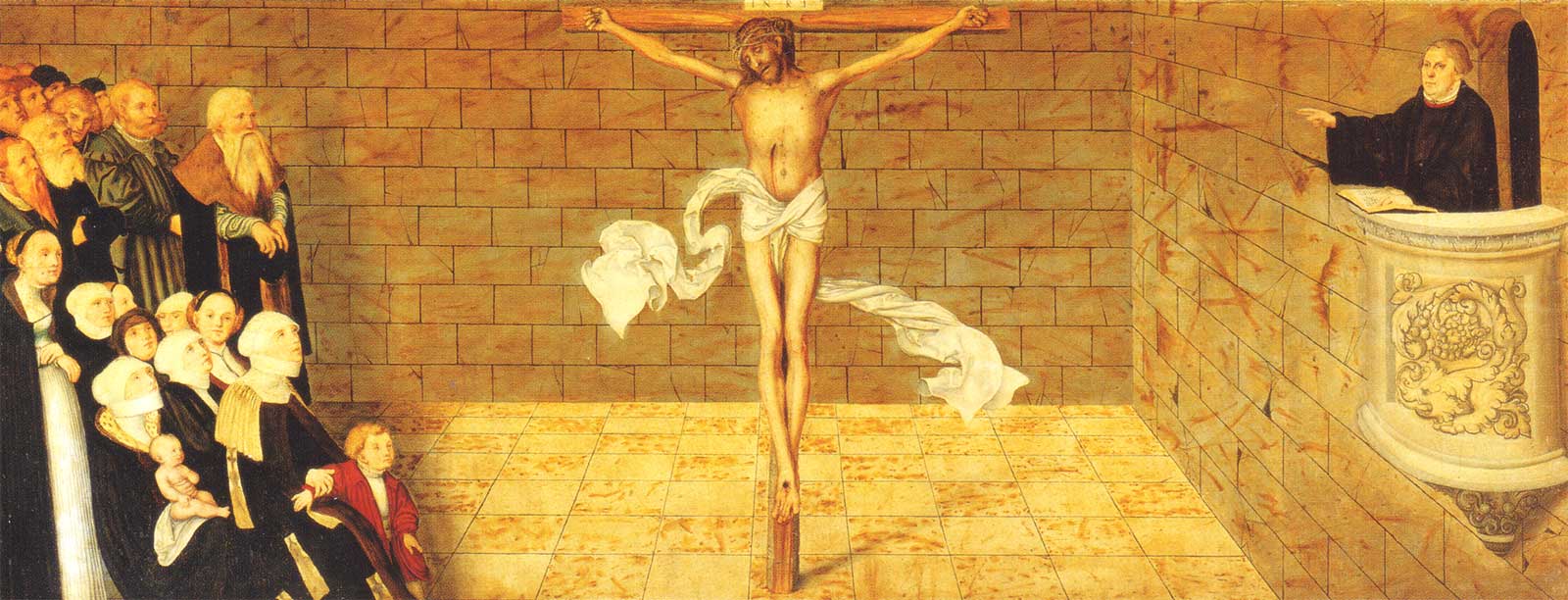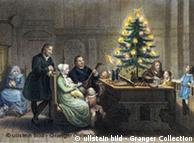A monk, a priest and professor of Theology, Martin Luther is better known as the Church Reformer, although his influence is also to be found in Education and Literature. Luther also fought for popularization of the schools and translated the Bible into German.
Luther was born on November 10th, in Eisleben, Turingia. He attended Latin schools in Mansfeld, Magdeburg and Eisenach, and was awarded the degree of Bachelor and Master of Arts by the University of Erfurt.
In 1505, he started his studies of law, but had to quit because of a message which he claimed to have received: on a stormy day he pleaded for help with Saint Anne, promising her to become a monk. Since then he retired into the Monastery of the Augustinian Order in Erfurt.
Luther was made priest in 1507. Encouraged by his superiors, he proceeded in his studies and obtained the degree of Doctor of Theology, in 1512. By decision of the Order’s Vicar, Hans von Staupitz, he was made a professor of Theology (Lectura in Biblia) at the Wittenberg University. Is his research, he discovered in the Epistle to the Romans what would be the theme of his future: salvation by faith alone. And, as a professor, he could freely propagate his ideas.
 |
| Martin Luther fastens the 95 theses to the doors of Wittember church |
The Curia prompted the Order of the Augustinians, the Papal Court and others to act in hushing up the conflict. But Luther had secured the support of the chapter of the Augustinian Order and had been backed up by the faculty professors of the Wittenberg University. He presented and defended his position in a debate with Hans Eck, in Leipzig. Even thus, the Pope excommunicated Luther in 1521.
At the same year, Luther was indicted by the Emperor Karl V and had to appear before the Assembly of Worms. Feeling sure of himself, he told the following to his inquisitors who wanted a retraction: "Whatever there is no retract from, I do not know, or want to, or can... because to act against one’s conscience is neither safe nor honest".
Luther was outlawed by the Emperor and was sheltered by Duke Frederik at the Castle of Wartburg, near Eisenach. In his shelter, he translated the New Testament from Greek into German, striving to write in such a simple and clear form as to be understood by everyone. He literally changed the language of his country, laying the foundations of modern German, although this had not been his prime intention.
Following the Peasant’s War in 1525, Luther set about to bring together the churches and schools that had adhered to the Reform in the German territories and the neighboring countries. He published cut service orders and books of Christian teaching, among which the Great Catechism and the Small Catechism.
Em 1530, the Emperor summoned him to the second Augsburg Assembly in an attempt in overcome the conflict. Philip Melanchton submitted to the Assembly a defense that would later be known as the Augsburg Confession. In spite of this, neither the Augsburg Confession, nor the efforts subsequently made could restore unity into the Roman Church and the Empire. In the intervening years, during the Council of Trent – 1545/63 – the Counter-Reform broke out.
 |
Christ is the center of Luther´s preaching - Masterpiece of Lucas Cranach |
In 1525, Luther married Katharina von Bora, and ex-nun noble descent, and had six children. He died in Eisleben on February 18th, 1546. He was buried at the church of the Wittenberg’s Castle.
 |
| Luther and his family on Christmas Eve |
Based on a text by the Brazilian Enterprise of Post and Telegraphs

Nenhum comentário:
Postar um comentário